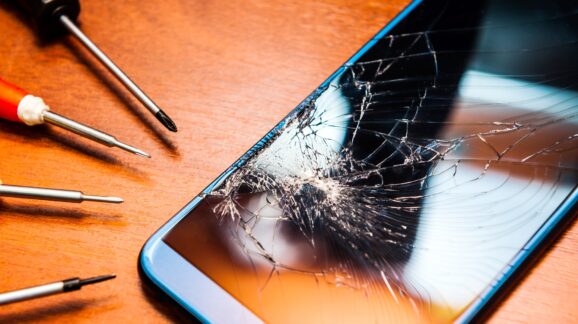New York Right to Repair Bill Is a Bad Idea

Photo Credit: Getty
Do consumers have the right to repair their smartphones, tablets, and laptops? The short answer is yes. While copyright law may have some room for improvement, legally speaking, there is very little prohibiting users from fixing or altering their personal electronic devices.
The New York State Legislature recently passed a bill that goes beyond the normal meaning of “right to repair.” I explain just a few underlying problems with the bill in an op-ed in Real Clear Policy:
For the most part, consumers already have the right to repair their electronic devices, even if an unofficial repair job voids a warranty or limits access to a corresponding digital platform. Accordingly, the U.S. Copyright Office grants exceptions to allow these activities. …
A New York law would upend that system that is already working. Lawmakers passed the nation’s first electronic right-to-repair legislation (which still awaits Governor Kathy Hochul’s signature), the so-called Digital Fair Repair Act (S4104; A7416A). It does nothing to address the property rights of consumers. Instead, it forces electronic manufacturers to sell their private property to independent repair shops, including “documentations, parts, and tools, inclusive of any updates to information or embedded software.”
The legislation is unnecessary, however, as it illustrates a myopic view of the electronic repair industry. The sponsor of the legislation, Assemblymember Patricia Fahy, wrote in a memorandum of support for the bill that “many of us have stacks of iPads or laptops or desktops in our basement because they’re not worth fixing because of the planned obsolescence … .”
“Planned obsolescence” has become a rallying cry for right-to-repair advocates. The phrase is used to describe intentional design features by manufacturers to limit the life cycle of electronic devices and to push users to buy new devices. In reality, the outcries over planned obsolescence are overstated, particularly when it comes to electronics.
It ignores the cause of most repairs: human error. Broken screens are overwhelmingly the most common damage incurred by smartphones and account for about 55 percent of breaks. And the leading causes of laptop damage are falls and liquid spills. More often than not, users break their device before they become obsolete. Two published studies, one in the Journal of Marketing Research and another in the journal Management Science, found that users are more likely to break or lose their device when a new version is released.
Furthermore, New York’s Digital Fair Repair Act fails to appreciate the choices already available to consumers when they are faced with a broken device. Consumer Reports released a survey last year that found that 57 percent of smartphone users replaced their smartphone without pursuing a repair of any kind. And only 22 percent of respondents said they replaced their smartphone sooner than desired. This is consistent with a uBreakiFix report, which found that 59 percent of users prefer to upgrade their smartphone rather than have it repaired.
Most consumers prefer to buy new, and others prefer to repair their smartphone. When a user decides to pursue repair, they have several options to choose from. And Consumer Reports found that users already choose a variety of different outlets for phone repair:
| Repair Location Chosen: | Percent of Respondents: |
| The store where phone was purchased | 33% |
| Original manufacturer | 23% |
| Authorized or certified repair shop | 23% |
| Independent repair shop | 21% |
| Repair service like Best Buy’s Geek Squad or uBreakiFix | 19% |
| Self-repair, or by friend or family member | 12% |
| Chain retailer | 10% |
The right-to-repair movement is multifaceted, touching on several policy issues like copyright, antitrust, and environmentalism. But legislation like the Digital Fair Repair Act, for which the movement advocates, doesn’t protect property rights. It doesn’t embody free markets, and it doesn’t appreciate consumer choice.